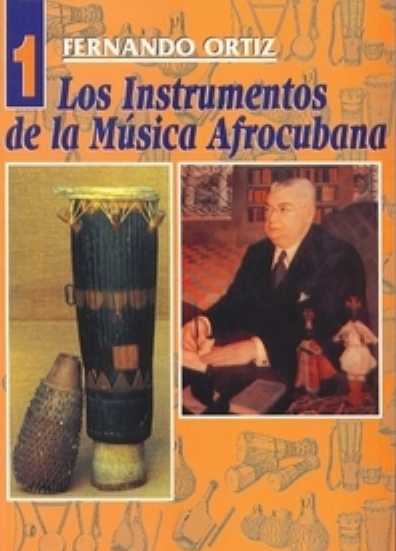4.4.2.12 Music and dance as the theme of the essay work of Fernando Ortiz (1881 – 1969)

The musical studies aspect of Fernando Ortiz’s work is particularly interesting given his fascination with African sounds and his desire to unravel its components and instruments, sometimes through almost lyrical evocations. He collaborated on this theme alongside the poetics of Nicolás Guillén and other bards of Negrismo; Alejo Carpentier and others drew from the web of knowledge he wove on the subject.
It can be said that his study of “Popular Pregones” (Popular Pregones), between 1925 and 1928, anticipated something of what would become his concerns about music, from the point of view of the lyrics.
Among other texts that he conceived in this sense, it is worth mentioning “El baile negro”, 1928, “De la música afrocubana”, 1934 and “De la rumba y el bongó”, from 1936. Note that he uses the term “baile” and not “danza”, since it was not his intention to address the deliquescences of high dance technique but rather the spontaneous and sometimes more elaborate manifestations that took place within the black ancestral communities.
Also inserted in this period, but of greater significance, is the essay piece “The Xylophonic “Key” of Cuban Music; An Ethnographic Essay,” 1935, in which he approaches the subject with a scientific probe that practically reveals all the facets of the phenomenon, in a language that constitutes an exponent of the highest literary flight of his prose:
“The sound of the clave will lend accents of primeval magic to the great orchestrations of the future. Like the clave, so must the fairy’s marvelous wand sound when it repeatedly strikes harsh reality and makes poetry spring forth from it for the pure spirits of children and virgins. (…) In this sonorous instant of the clave lies the deepest and most moving expression of Cuba’s soul.”
His essays “Ethnic Preludes of Cuban Music” and “The Africanity of Folk Music” date from the late 1940s. In the 1950s, he produced his most important studies on the subject of African heritage in Cuban music: “The Africanity of Cuban Folk Music” (1950); “Black Dances and Theater in Cuban Folklore” (1951); and “The Instruments of Afro-Cuban Music” (1952), the latter consisting of five volumes. In this regard, musical themes occupied a prominent place in the final stage of his scientific output.








